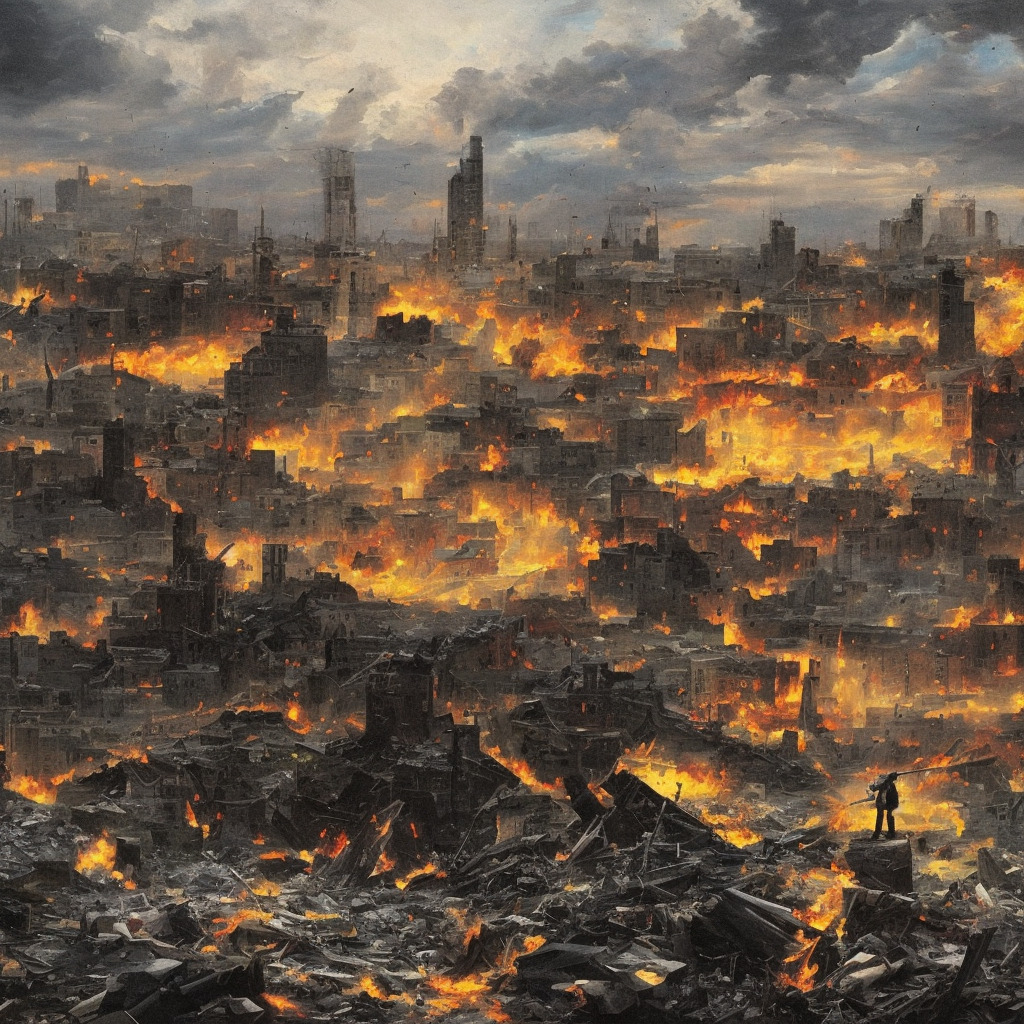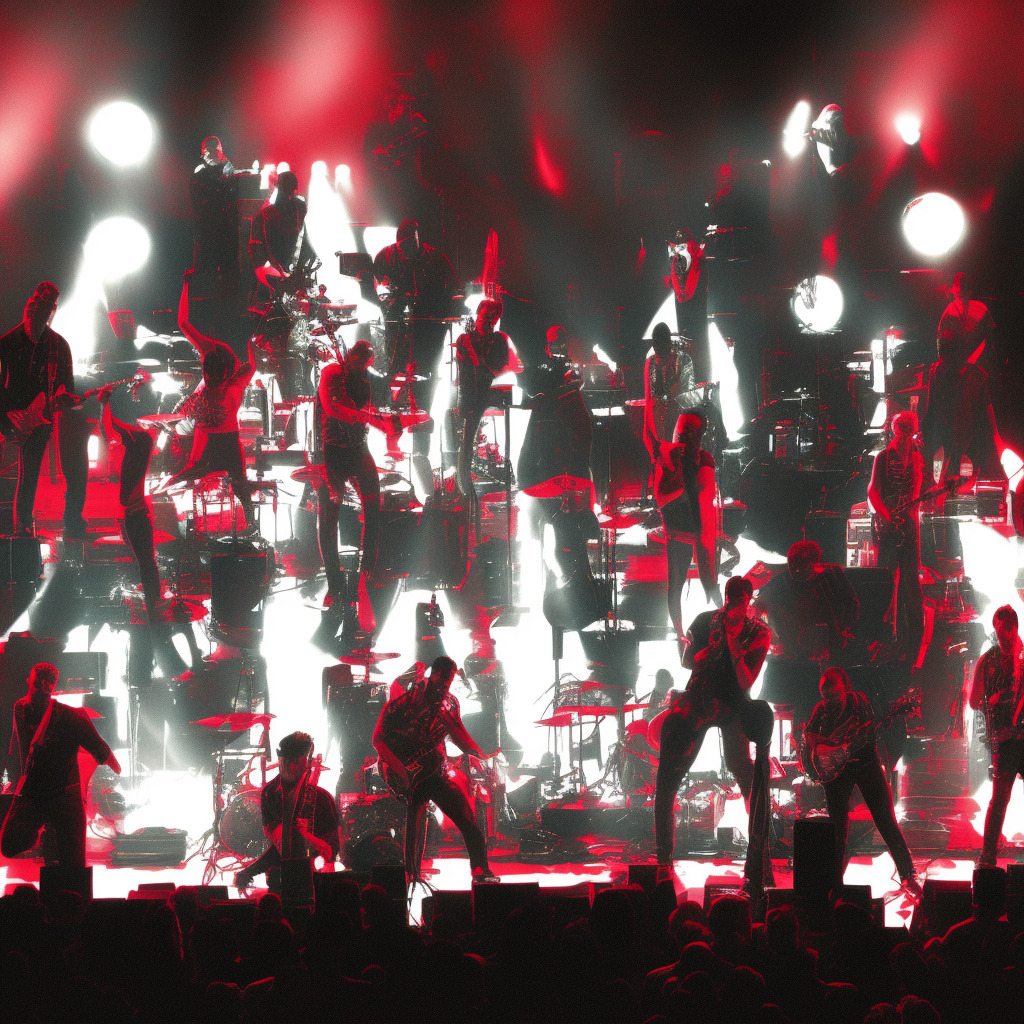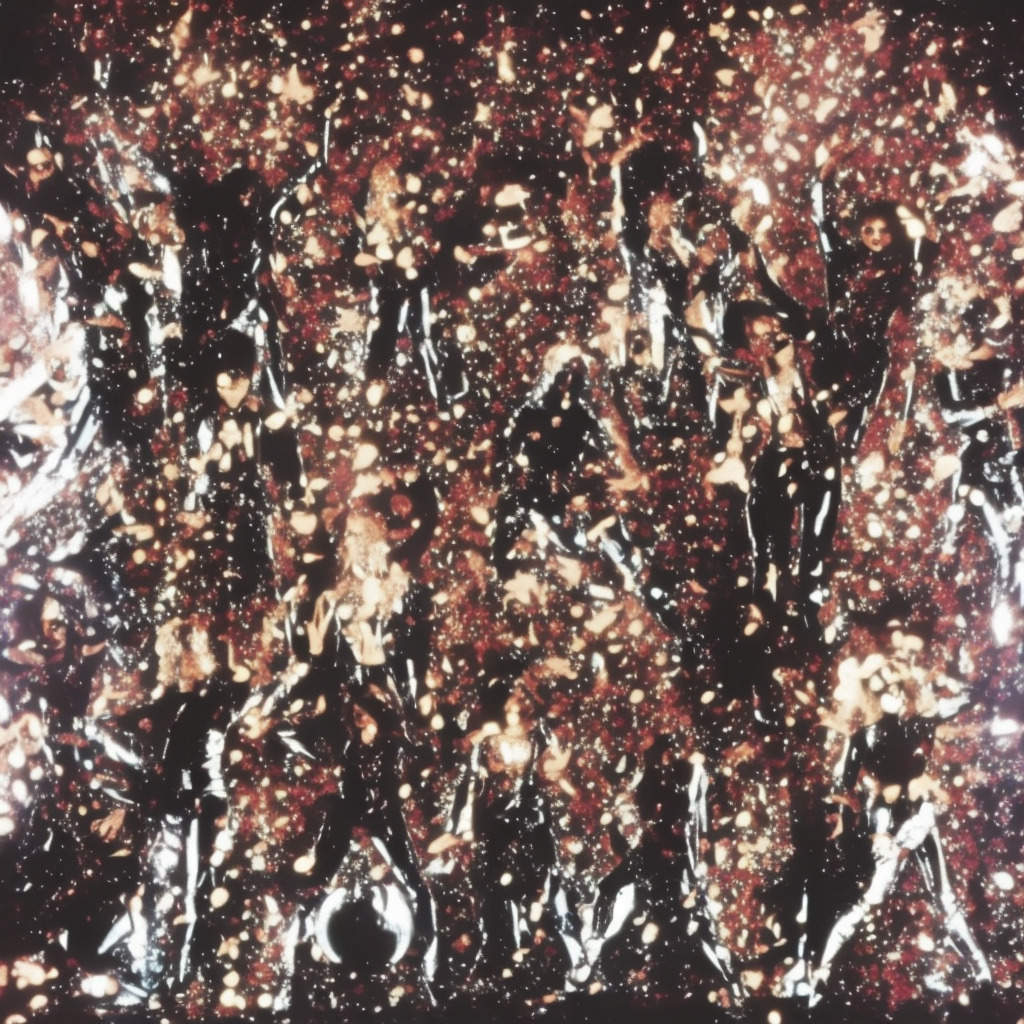🎸Did you know? #Megadeth’s “Symphony of Destruction” was inspired by a classical piece!🎻 Dave Mustaine meshed metal & Mozart for this 1992 banger🔥#FunFact #MusicTrivia #SymphonyOfDestruction Read about it: tinyurl.com/ye27hrbn
Unraveling the Intricacies of Megadeth’s Magnum Opus
“Unleashing the power of Megadeth’s musical mastery: A symphonic journey through Metal’s profound legacy.”

As one delves into the expansive world of heavy metal, it’s impossible to ignore the indelible mark left by the legendary band Megadeth. Formed in 1983 by guitarist and vocalist Dave Mustaine after his unceremonious exit from Metallica, Megadeth has gone on to become one of the most celebrated metal bands in history, with over 38 million records sold worldwide. With a revolving door of skilled musicians, the current lineup comprises founder Dave Mustaine, lead guitarist Kiko Loureiro, bassist David Ellefson, and drummer Dirk Verbeuren.
One cannot discuss Megadeth without mentioning their iconic 1992 song, “Symphony of Destruction,” off their fifth studio album, ‘Countdown to Extinction.’ This track is a prime example of the band’s technical prowess and their keen ability to blend intricate guitar work with thought-provoking lyrics, accompanied by Mustaine’s snarling vocal delivery. The politically charged song speaks to the corruptive influence of power and the potential for catastrophic consequences when leaders manipulate the masses.
It’s worth noting that the song features the distinctive guitar harmonies of Mustaine and then-lead guitarist Marty Friedman, whose contributions to the band during his ten-year tenure (1990-2000) are widely regarded as some of Megadeth’s best work. The track’s success proved that Megadeth was more than capable of standing toe-to-toe with their contemporaries, including Mustaine’s former band, Metallica. “Symphony of Destruction” became a mainstay on rock radio and remains a fan-favorite at live shows to this day.
On the flip side, Megadeth has faced its fair share of criticism, particularly for Mustaine’s tumultuous personal life, which has, at times, overshadowed the band’s music. His outspoken nature and occasional controversial statements have led to polarized opinions of the band among fans and critics alike. Despite this, Megadeth’s undeniable talent and influence have earned them numerous accolades, including 12 Grammy nominations, with a win in 2017 for Best Metal Performance for their song “Dystopia.”
In conclusion, Megadeth’s “Symphony of Destruction” stands as a testament to the band’s skill and impact on the heavy metal genre. As the band continues to forge ahead, their legacy remains firmly rooted in their ability to craft powerful, intricate, and memorable music that stands the test of time.
Charting the Path of a Heavy Metal Anthem
Unleashing a Heavy Metal Legacy: Megadeth’s “Symphony of Destruction” soars to chart success, solidifying their global phenomenon status while showcasing their musical prowess and timeless appeal.

“Symphony of Destruction” was unleashed upon the world on July 27, 1992, as the lead single from Megadeth’s fifth studio album, “Countdown to Extinction”. The song’s success became a defining moment for the band, reflecting their unstoppable ascent in the world of heavy metal.
Upon its release, “Symphony of Destruction” took the airwaves by storm, steadily climbing the charts on both sides of the Atlantic. In the U.S., the song managed to peak at No. 15 on Billboard’s Mainstream Rock Tracks chart, making it Megadeth’s highest-charting single at the time. It went on to spend a total of 16 weeks on the chart, proving that the song had the endurance to captivate audiences for months on end.
Across the pond, “Symphony of Destruction” fared well in the United Kingdom. The track debuted at No. 47 on the UK Singles Chart and eventually surged to an impressive peak position of No. 31, spending a total of four weeks within the Top 75. The song’s success in the UK helped solidify Megadeth’s status as a global phenomenon, with fans eagerly devouring their signature brand of thrash metal.
In addition to its chart performance, “Symphony of Destruction” has garnered several accolades from industry insiders and critics alike. In 1993, the song was ranked No. 5 on Guitar World’s list of the “100 Greatest Guitar Solos of All Time” – a testament to the technical wizardry and raw power displayed by the band’s axe-wielding duo of Dave Mustaine and Marty Friedman.
Furthermore, “Symphony of Destruction” has gone on to become a staple in Megadeth’s live shows, with the band often using it as a high-octane concert closer. The song’s enduring popularity has led to numerous cover versions and tributes, cementing its status as a heavy metal anthem for the ages.
As the years have passed, “Symphony of Destruction” has remained a shining example of Megadeth’s musical prowess and chart success. Today, it proudly stands as one of the most beloved tracks in the heavy metal pantheon, a testament to the genre’s power, complexity, and timeless appeal.
The Unravelling of the Human Psyche
As we delve deeper into the lyrics of “Symphony of Destruction,” we are met with profound, thought-provoking themes that reflect the spirit of the early 90s. The song was released in 1992, during a time marked by political upheaval and environmental concerns.
You take a mortal man
And put him in control
Watch him become a god
Watch people’s heads a’roll
A’roll, a’ roll
Just like the Pied Piper
Led rats through the streets
We dance like marionettes
Swaying to the symphony of destruction
The opening lines of the song present the idea of a mortal man being given immense power and control, only to transform into a god-like figure. This can be interpreted as a commentary on the dangers of unbridled power and authority. The image of people’s heads rolling serves as a metaphor for the devastating consequences that can arise from placing individuals in such powerful positions without any checks and balances.
Acting like a robot
Its metal brain corrodes
You try to take its pulse
Before the head explodes
Explodes, explodes
Just like the Pied Piper
Led rats through the streets
We dance like marionettes
Swaying to the symphony of destruction
The second verse speaks to the dehumanizing effects of technology, as the “robot” with a corroding metal brain represents the loss of empathy and humanity that can occur when we become overly reliant on machines. There’s a sense of urgency in these lines, as though we need to regain our humanity before it’s too late.
The chorus, with its reference to the Pied Piper, seems to suggest that society is blindly following a destructive path, much like the rats that were led through the streets by the mythical figure. The imagery of dancing like marionettes, swaying to the symphony of destruction, evokes a sense of helplessness and loss of control over our own destinies.
Overall, the lyrics of “Symphony of Destruction” capture the zeitgeist of the early 90s, touching on themes of power, technology, and environmental degradation. Megadeth’s haunting lyrics serve as a warning, urging society to remain vigilant and take responsibility for our collective future.
Visualizing the Symphony of Destruction
Dive into Megadeth’s captivating world of political intrigue and power struggles with the visually striking and thought-provoking “Symphony of Destruction” music video, a testament to the band’s commitment to heavy metal and impactful storytelling.
When it comes to the music video for Megadeth’s “Symphony of Destruction,” we are transported to a world of political intrigue and power struggles. Directed by the talented Wayne Isham, who has also worked with iconic bands such as Metallica, Bon Jovi, and Mötley Crüe, the video showcases Megadeth’s ability to combine heavy metal with captivating visuals.
The production of the music video is quite impressive, featuring a combination of live performance footage intertwined with a thought-provoking narrative. The story revolves around a puppet leader, controlled by a sinister figure in the shadows, reminiscent of George Orwell’s “1984” or Fritz Lang’s “Metropolis.” The idea of a manipulated political figure was a daring choice for a music video during the early ’90s, but Megadeth’s commitment to social commentary and thought-provoking lyrics made it fitting for the song’s themes.
While the exact budget for the creation of the “Symphony of Destruction” music video remains undisclosed, the high-quality production value and seamless integration of live performance and storyline elements suggest that Megadeth and their production team spared no expense. The end result is a music video that not only entertains but leaves the viewer reflecting on the themes and concepts presented.
Aside from the official music video, Megadeth’s massive fanbase has been inspired to create their own tributes, including numerous YouTube covers and fan-made interpretations of the song’s storyline. One particularly noteworthy fan video combines “Symphony of Destruction” with scenes from the movie “V for Vendetta,” a dystopian political thriller that aligns perfectly with the music video’s themes of manipulation and control.
In the end, the “Symphony of Destruction” music video stands as a testament to Megadeth’s commitment to delivering powerful music accompanied by equally powerful visuals. Wayne Isham’s direction and the band’s creative input have resulted in a visually striking and thought-provoking piece that continues to resonate with fans and newcomers alike, nearly three decades after its release.
The Mastermind Behind the Mayhem: Dave Mustaine
Diving into the creative genius behind “Symphony of Destruction,” we can’t help but mention the multi-talented Dave Mustaine. As Megadeth’s lead vocalist, guitarist, and primary songwriter, Mustaine has been a driving force in the world of heavy metal music for decades. Bursting onto the scene after his departure from Metallica, he co-founded Megadeth in 1983 alongside bassist David Ellefson. Mustaine has composed the majority of Megadeth’s extensive discography, with numerous chart-topping hits under his belt.
One of his most notable compositions is the politically charged “Peace Sells,” which helped cement Megadeth’s place in the 1980s thrash metal movement. Another fan favorite is “Holy Wars… The Punishment Due,” a song that showcases Mustaine’s incredible ability to blend intricate guitar work with thought-provoking lyrics. This track, alongside the aforementioned “Symphony of Destruction,” elevated Megadeth to a new level of success with the release of their 1990 album, ‘Rust in Peace.’
Mustaine’s exceptional songwriting has earned him a well-deserved spot among the greats in the world of metal. His contributions to the genre have had a lasting impact, inspiring countless musicians and shaping the sound of heavy metal as we know it today.
Awards, Accolades, and Noteworthy Appearances
“Symphony of Destruction”: Megadeth’s powerhouse anthem conquers charts, pop culture, and captures the hearts of dedicated fans since ’92.

“Symphony of Destruction” has been a powerhouse track since its release on Megadeth’s 1992 album, Countdown to Extinction. The song’s wild success garnered it a well-deserved spot at number 71 on VH1’s “100 Greatest Hard Rock Songs” list. In addition to this prestigious accolade, the track peaked at number 15 on the US Billboard Mainstream Rock Tracks chart, proving its lasting impact in the world of rock and heavy metal.
Throughout the years, this iconic song has found its way into various corners of popular culture. Fans of the 2006 video game, Tony Hawk’s Proving Ground, might recall shredding to the energizing beats of “Symphony of Destruction.” Furthermore, professional wrestler “The Destroyer” adopted the track as his entrance theme, reflecting its wide appeal and undeniably powerful energy.
Besides featuring in video games and the wrestling world, “Symphony of Destruction” has been immortalized in the world of movies and television as well. The song’s inclusion in the 2007 film, Shoot ‘Em Up, contributed towards setting a thrilling atmosphere in the action-packed movie. Moreover, the song made its television appearance in the hit American TV series The Walking Dead (Season 8, Episode 9), where it was expertly used to emphasize the ruthlessness and intensity of the on-screen action.
Over time, “Symphony of Destruction” has inspired various musicians and bands to pay tribute to Megadeth’s masterpiece with their own cover versions. One such notable cover comes from Finnish cello metal band, Apocalyptica. This talented group of musicians expertly infused their classical approach with heavy metal, creating a unique rendition of “Symphony of Destruction” that intrigues and captivates listeners in equal measure. Additionally, during the summer of 2007, Megadeth invited scores of fans on stage to sing along to this timeless track during their live performances, highlighting the unwavering love and dedication of the band’s fanbase.
Breaking Down the Musical Elements
Diving into the nitty-gritty of “Symphony of Destruction,” we can see that Megadeth has incorporated a unique blend of technical musicianship and memorable songwriting. This track is written in the key of E minor, which often lends itself to a darker, more melancholic tone, fitting for the subject matter of the song.
The song starts with a distinctive and memorable guitar riff that sets the stage for the rest of the track. The riff is based around the power chords E5, G5, and A5, which are staples in the heavy metal and rock genres. The intro features a palm-muted technique, which adds to the heavy and driving sound of the song.
The verse follows with a tempo of 126 BPM (beats per minute), featuring a steady 4/4 time signature. The chord progression during the verse remains simple, primarily rotating between the E5 and G5 power chords. The simplicity of the chord structure allows the listener to focus on Dave Mustaine’s vocals and the thought-provoking lyrics.
One of the standout features of “Symphony of Destruction” is the pre-chorus build-up, which adds tension and anticipation for the explosive chorus. This section showcases a chord progression of C5, B5, A5, G5, and F#5, which helps to build the aforementioned tension. The chorus then explodes into a powerful and catchy melody, featuring the chords E5, D5, C5, and B5.
Megadeth is known for their complex and intricate guitar solos, and “Symphony of Destruction” is no exception. The solo section showcases Mustaine’s impressive guitar skills, as well as his ability to seamlessly blend melody and technicality. The solo is played over a simple chord progression of E5, G5, A5, and B5, allowing the lead guitar to take center stage.
The bridge section is another highlight, which features a tempo change and a shift to a triplet feel. This gives the song an added level of complexity and keeps the listener engaged throughout the duration of the track. The tempo change also serves to break up the song’s structure, making it more than just a simple verse-chorus-verse formula.
In conclusion, “Symphony of Destruction” showcases Megadeth’s ability to seamlessly blend technical musicianship with memorable songwriting. The track features a unique blend of simple and complex elements, resulting in a song that remains a fan favorite to this day.







